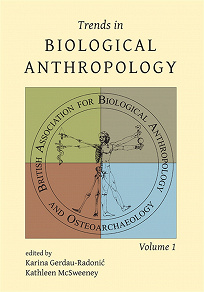E-bok
Trends in Biological Anthropology 1
This first volume in the series Trends in Biological Anthropology presents 11 papers. The study of modern baboons as proxies to understand extinct hominin species’ diet and the interpretation of skeletal degenerative joint disease on the skeletal remains of extant primates are presented as case studies using methods and standards usually applied to human remains. The methodological theme continues with an assessment of the implications for interpretation of different methods used to record Linear Enamel Hypoplasia (LEH) and on the use and interpretation of three dimensional modeling to generate pictures of the content of collective graves. Three case studies on palaeopathology are presented. First is the analysis of a 5th–16th century skeletal collection from the Isle of May compared with one from medieval Scotland in an attempt to ascertain whether the former benefitted from a healing tradition. Study of a cranium found at Verteba Cave, western Ukraine, provides a means to understand interpersonal interactions and burial ritual during the Trypillian culture. A series of skulls from Belgrade, Serbia, displays evidence for beheading. Two papers focus on the analysis disarticulated human remains at the Worcester Royal Infirmary and on Thomas Henry Huxley’s early attempt to identify a specific individual through analysis of skeletal remains. The concept and definition of ‘perimortem’ particularly within a Forensic Anthropology context are examined and the final paper presents a collaborative effort between historians, archaeologists, museum officers, medieval re-enactors and food scientists to encourage healthy eating among present day Britons by presenting the ill effects of certain dietary habits on the human skeleton.
Logga in för att låna
Information
Stöds av följande plattformar
PC/Mac
Surfplatta Läsplatta
Smartphone

